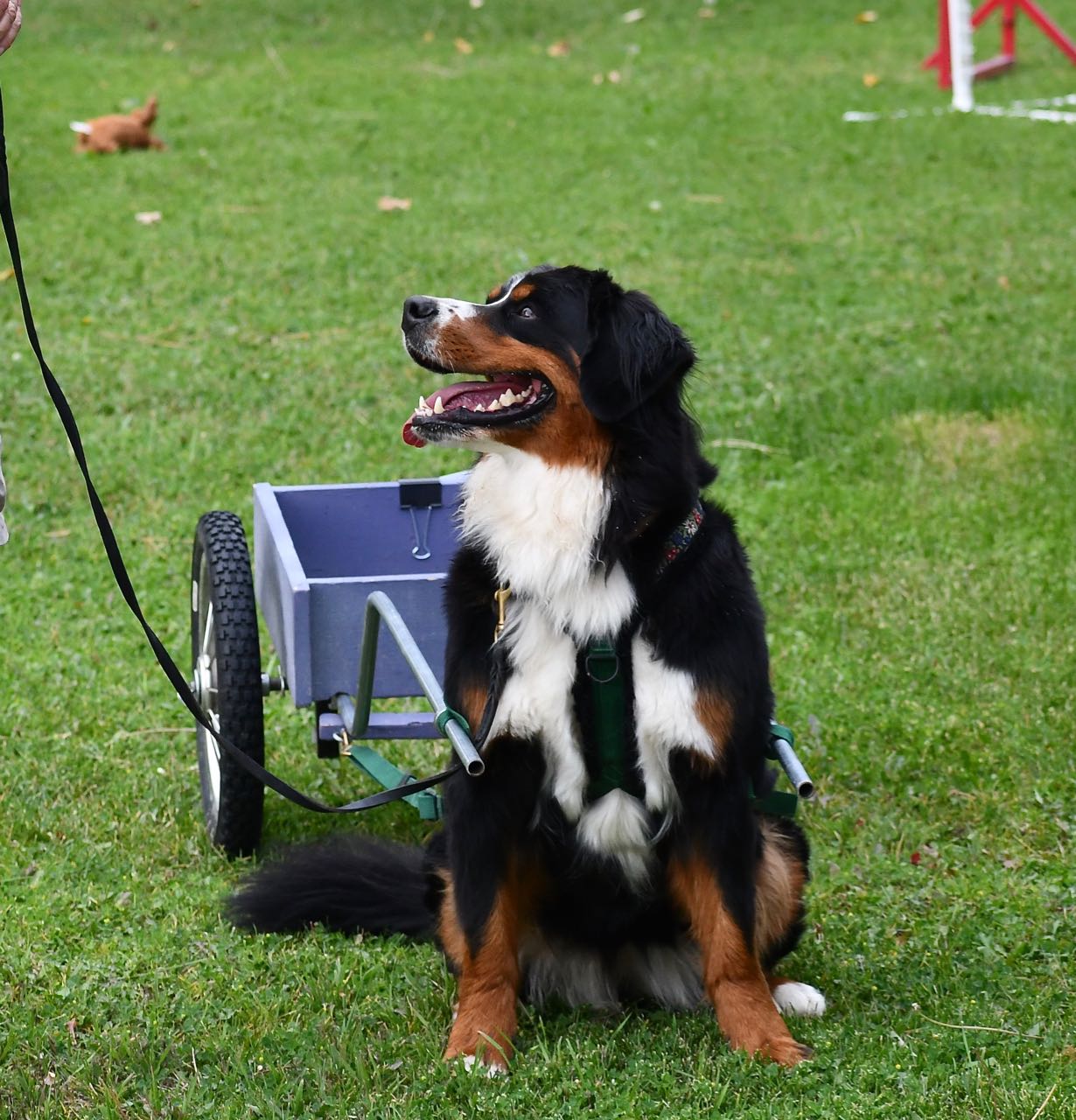It was 35 degrees yesterday in the late afternoon and I was so happy that it was warm enough to do some outside obedience training — a reminder about adaptability and perspective.
Having an UP dog when training/playing/competing is not the same thing as having a dog who is just plain wild and crazy. My girls are easy to live with, and have on/off buttons (so to speak).
First up was Sparkle — she was SO happy to be training!
Down Signal — cookie — Sit Signal — go chase the stuffed moose.
We played Go Out Games, which is the same — and different — as saying I trained Go Outs.
It is the same because yes, I was training Go Outs.
But it is different because to say we reflects my collaborative approach to dog training, and playing games speaks of my commitment to attitude and fun.
And then it was Claire’s turn and the volume on the bouncing and attitude somehow got even higher, which did not seem possible; Sparkle is a hard act to follow.
Claire is a novice dog and at almost three years old, has spent literally years on her heeling skills, which are such an important foundation for all of obedience showing.
It is easy to lose attitude when training heeling, which is why it must be playing at heeling. If the difference doesn’t resonate, that is an invitation to change your mental channel about dog training.
Daisy — happy to tear up the agility course, and content to hang out quietly and happily in the house.
But what I was really planning to share this morning is something related to my ongoing series.
When my dog — an experienced one or a novice one — doesn’t meet my expectation for a behavior, there are really just two choices: I can blame the dog or I can take responsibility.
If I blame the dog, the correction lands on the dog.
If I take responsibility, I change something.
Training dogs reminds me on a daily basis to pay attention to my own role in relationships, the challenges associated with communicating clear expectations, and the value of assuming good intentions.
How would you be different if Blame was not part of your Game? If you understood unmet expectations as simply a lack of understanding — or that your expectations are not actually realistic?
What would change in relationships — with humans and dogs — if differences or unmet expectations simply made us curious — and not defensive or angry?
Huh. Interesting stuff.







